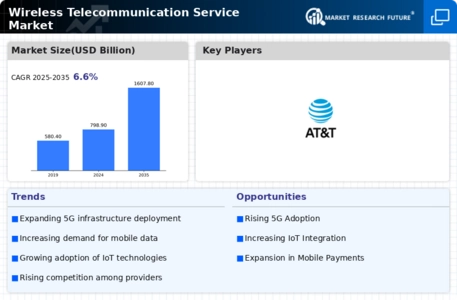-
REPORT PROLOGUE
-
INTRODUCTION
-
DEFINITION
-
SCOPE OF THE STUDY
- RESEARCH OBJECTIVE
- ASSUMPTIONS
- LIMITATIONS
-
MARKET STRUCTURE
-
RESEARCH METHODOLOGY
-
RESEARCH PROCESS
-
PRIMARY RESEARCH
-
SECONDARY RESEARCH
-
MARKET SIZE ESTIMATION
-
FORECAST MODEL
-
MARKET DYNAMICS
-
DRIVERS
-
RESTRAINTS
-
OPPORTUNITIES
-
CHALLENGES
-
MARKET FACTOR ANALYSIS
-
VALUE CHAIN ANALYSIS/SUPPLY CHAIN ANALYSIS
-
PORTERS FIVE FORCES
- BARGAINING POWER OF SUPPLIERS
- BARGAINING POWER OF CUSTOMER
- INTENSITY OF COMPETITOR’S
- THREAT OF NEW ENTRANTS
- THREAT OF SUBSTITUTES
-
GLOBAL WIRELESS TELECOMMUNICATION SERVICE MARKET, ESTIMATION & FORECAST, BY SERVICE TYPE
-
INTRODUCTION
-
MARKET STATICS
-
VOICE
-
DATA
-
GLOBAL WIRELESS TELECOMMUNICATION SERVICE MARKET, ESTIMATION & FORECAST, BY TECHNOLOGY
-
INTRODUCTION
-
MARKET STATISTICS
-
2G
-
3G
-
4G
-
OTHERS
-
GLOBAL WIRELESS TELECOMMUNICATION SERVICE MARKET, ESTIMATION & FORECAST, BY INDUSTRY
-
INTRODUCTION
-
MARKET STATICSTICS
-
EDUCATION
-
HEALTHCARE
-
RESIDENTIAL
-
GOVERNMENT
-
BUSINESS
-
OTHER
-
GLOBAL WIRELESS TEELCOMMUNICATION SERVICE, ESTIMATION AND FORECAST, BY GEOGRAPHY
-
INTRODUCTION
- MARKET STATISTICS
-
NORTH AMERICA
-
EUROPE
-
APAC
-
ROW
-
COMPETITIVE LANDSCAPE
-
INTRODUCTION
- MERGERS & ACQUISITIONS
- COLLABORATIONS
- RELEASES/NEW PRODUCT LAUNCHES
- OTHER (EXPANSION/ UPDATES/PARTNERSHIPS)
-
COMPANY PROFILE
-
AT&T, INC.
- COMPANY OVERVIEW
- PRODUCT/BUSINESS SEGMENT OVERVIEW
- FINANCIAL UPDATES
- KEY DEVELOPMENTS
-
CHINA MOBILE COMMUNICATIONS CORPORATION
- COMPANY OVERVIEW
- PRODUCT/BUSINESS SEGMENT OVERVIEW
- FINANCIAL UPDATES
- KEY DEVELOPMENTS
-
VERIZON COMMUNICATIONS, INC.
- COMPANY OVERVIEW
- PRODUCT/BUSINESS SEGMENT OVERVIEW
- FINANCIAL UPDATES
- KEY DEVELOPMENTS
-
VODAFONE GROUP PLC
- COMPANY OVERVIEW
- PRODUCT/BUSINESS SEGMENT OVERVIEW
- FINANCIAL UPDATES
- KEY DEVELOPMENTS
-
THE NIPPON TELEGRAPH AND TELEPHONE CORPORATION
- COMPANY OVERVIEW
- PRODUCT/BUSINESS SEGMENT OVERVIEW
- FINANCIAL UPDATES
- KEY DEVELOPMENTS
-
TELEFÓNICA, S.A.
- COMPANY OVERVIEW
- PRODUCT/BUSINESS SEGMENT OVERVIEW
- FINANCIAL UPDATES
- KEY DEVELOPMENTS
-
AMERICA MÓVIL
- COMPANY OVERVIEW
- PRODUCT/BUSINESS SEGMENT OVERVIEW
- FINANCIAL UPDATES
- KEY DEVELOPMENTS
-
DEUTSCHE TELEKOM AG
- COMPANY OVERVIEW
- PRODUCT/BUSINESS SEGMENT OVERVIEW
- FINANCIAL UPDATES
- KEY DEVELOPMENTS
-
CHINA TELECOMMUNICATIONS CORPORATION
- COMPANY OVERVIEW
- PRODUCT/BUSINESS SEGMENT OVERVIEW
- FINANCIAL UPDATES
- KEY DEVELOPMENTS
-
SOFTBANK GROUP CORP
- COMPANY OVERVIEW
- PRODUCT/BUSINESS SEGMENT OVERVIEW
- FINANCIAL UPDATES
- KEY DEVELOPMENTS
-
OTHERS
-
MRFR CONCLUSION
-
APPENDIX
-
-
LIST OF TABLES
-
GLOBAL WIRELESS TEELCOMMUNICATION SERVICE, BY SERVICE TYPE
-
GLOBAL WIRELESS TEELCOMMUNICATION SERVICE, BY TECHNOLOGY
-
GLOBAL WIRELESS TEELCOMMUNICATION SERVICE, BY INDUSTRY
-
GLOBAL WIRELESS TEELCOMMUNICATION SERVICE, BY REGIONS
-
NORTH AMERICA WIRELESS TEELCOMMUNICATION SERVICE, BY SERVICE TYPE
-
NORTH AMERICA WIRELESS TEELCOMMUNICATION SERVICE, BY TECHNOLOGY
-
NORTH AMERICA WIRELESS TEELCOMMUNICATION SERVICE, BY INDUSTRY
-
U.S. WIRELESS TEELCOMMUNICATION SERVICE, BY SERVICE TYPE
-
U.S. WIRELESS TEELCOMMUNICATION SERVICE, BY TECHNOLOGY
-
U.S. WIRELESS TEELCOMMUNICATION SERVICE, BY INDUSTRY
-
CANADA WIRELESS TEELCOMMUNICATION SERVICE, BY SERVICE TYPE
-
CANADA WIRELESS TEELCOMMUNICATION SERVICE, BY TECHNOLOGY
-
CANADA WIRELESS TEELCOMMUNICATION SERVICE, BY INDUSTRY
-
EUROPE WIRELESS TEELCOMMUNICATION SERVICE, BY COUNTRY
-
EUROPE WIRELESS TEELCOMMUNICATION SERVICE, BY SERVICE TYPE
-
EUROPE WIRELESS TEELCOMMUNICATION SERVICE, BY TECHNOLOGY
-
7 EUROPE WIRELESS TEELCOMMUNICATION SERVICE, BY INDUSTRY
-
GERMANY WIRELESS TEELCOMMUNICATION SERVICE, BY SERVICE TYPE
-
GERMANY WIRELESS TEELCOMMUNICATION SERVICE, BY TECHNOLOGY
-
GERMANY WIRELESS TEELCOMMUNICATION SERVICE, BY INDUSTRY
-
FRANCE WIRELESS TEELCOMMUNICATION SERVICE, BY SERVICE TYPE
-
FRANCE WIRELESS TEELCOMMUNICATION SERVICE, BY TECHNOLOGY
-
3 FRANCE WIRELESS TEELCOMMUNICATION SERVICE, BY INDUSTRY
-
U.K. WIRELESS TEELCOMMUNICATION SERVICE, BY SERVICE TYPE
-
U.K. WIRELESS TEELCOMMUNICATION SERVICE, BY TECHNOLOGY
-
U.K. WIRELESS TEELCOMMUNICATION SERVICE, BY INDUSTRY
-
REST OF EUROPE WIRELESS TEELCOMMUNICATION SERVICE, BY SERVICE TYPE
-
REST OF EUROPE WIRELESS TEELCOMMUNICATION SERVICE, BY TECHNOLOGY
-
REST OF EUROPE WIRELESS TEELCOMMUNICATION SERVICE, BY INDUSTRY
-
ASIA-PACIFIC WIRELESS TEELCOMMUNICATION SERVICE, BY SERVICE TYPE
-
ASIA-PACIFIC WIRELESS TEELCOMMUNICATION SERVICE, BY TECHNOLOGY
-
ASIA-PACIFIC WIRELESS TEELCOMMUNICATION SERVICE, BY INDUSTRY
-
ASIA-PACIFIC WIRELESS TEELCOMMUNICATION SERVICE, BY COUNTRY
-
MIDDLE EAST & AFRICA WIRELESS TEELCOMMUNICATION SERVICE, BY SERVICE TYPE
-
MIDDLE EAST & AFRICA WIRELESS TEELCOMMUNICATION SERVICE, BY TECHNOLOGY
-
MIDDLE EAST & AFRICA WIRELESS TEELCOMMUNICATION SERVICE, BY INDUSTRY
-
-
LIST OF FIGURES
-
RESEARCH TYPE
-
GLOBAL WIRELESS TEELCOMMUNICATION SERVICE: BY SERVICE TYPE (%)
-
GLOBAL WIRELESS TEELCOMMUNICATION SERVICE: BY TECHNOLOGY (%)
-
GLOBAL WIRELESS TEELCOMMUNICATION SERVICE: BY INDUSTRY (%)
-
GLOBAL WIRELESS TEELCOMMUNICATION SERVICE: BY REGION
-
NORTH AMERICA WIRELESS TEELCOMMUNICATION SERVICE, BY SERVICE TYPE (%)
-
NORTH AMERICA WIRELESS TEELCOMMUNICATION SERVICE, BY TECHNOLOGY (%)
-
NORTH AMERICA WIRELESS TEELCOMMUNICATION SERVICE: BY INDUSTRY (%)
-
NORTH AMERICA WIRELESS TEELCOMMUNICATION SERVICE, BY COUNTRIES (%)
-
EUROPE WIRELESS TEELCOMMUNICATION SERVICE, BY SERVICE TYPE (%)
-
EUROPE WIRELESS TEELCOMMUNICATION SERVICE, BY TECHNOLOGY (%)
-
EUROPE WIRELESS TEELCOMMUNICATION SERVICE: BY INDUSTRY (%)
-
EUROPE WIRELESS TEELCOMMUNICATION SERVICE, BY COUNTRIES (%)
-
ASIA-PACIFIC WIRELESS TEELCOMMUNICATION SERVICE, BY SERVICE TYPE (%)
-
ASIA-PACIFIC WIRELESS TEELCOMMUNICATION SERVICE, BY TECHNOLOGY (%)
-
ASIA-PACIFIC WIRELESS TEELCOMMUNICATION SERVICE: BY INDUSTRY (%)
-
ASIA-PACIFIC WIRELESS TEELCOMMUNICATION SERVICE, BY COUNTRIES (%)
-
ROW WIRELESS TEELCOMMUNICATION SERVICE, BY SERVICE TYPE (%)
-
ROW WIRELESS TEELCOMMUNICATION SERVICE, BY TECHNOLOGY (%)
-
ROW WIRELESS TEELCOMMUNICATION SERVICE: BY INDUSTRY (%)









Leave a Comment